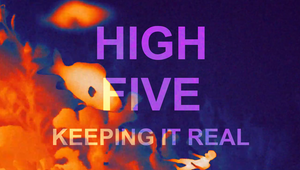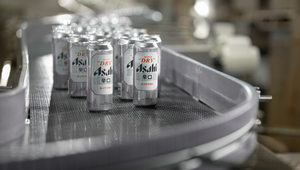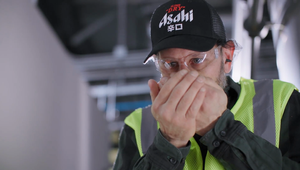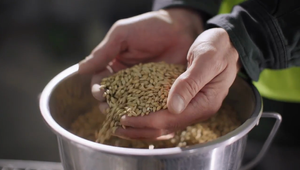
By Design: Create Your Own Opportunities with Ali Coggan
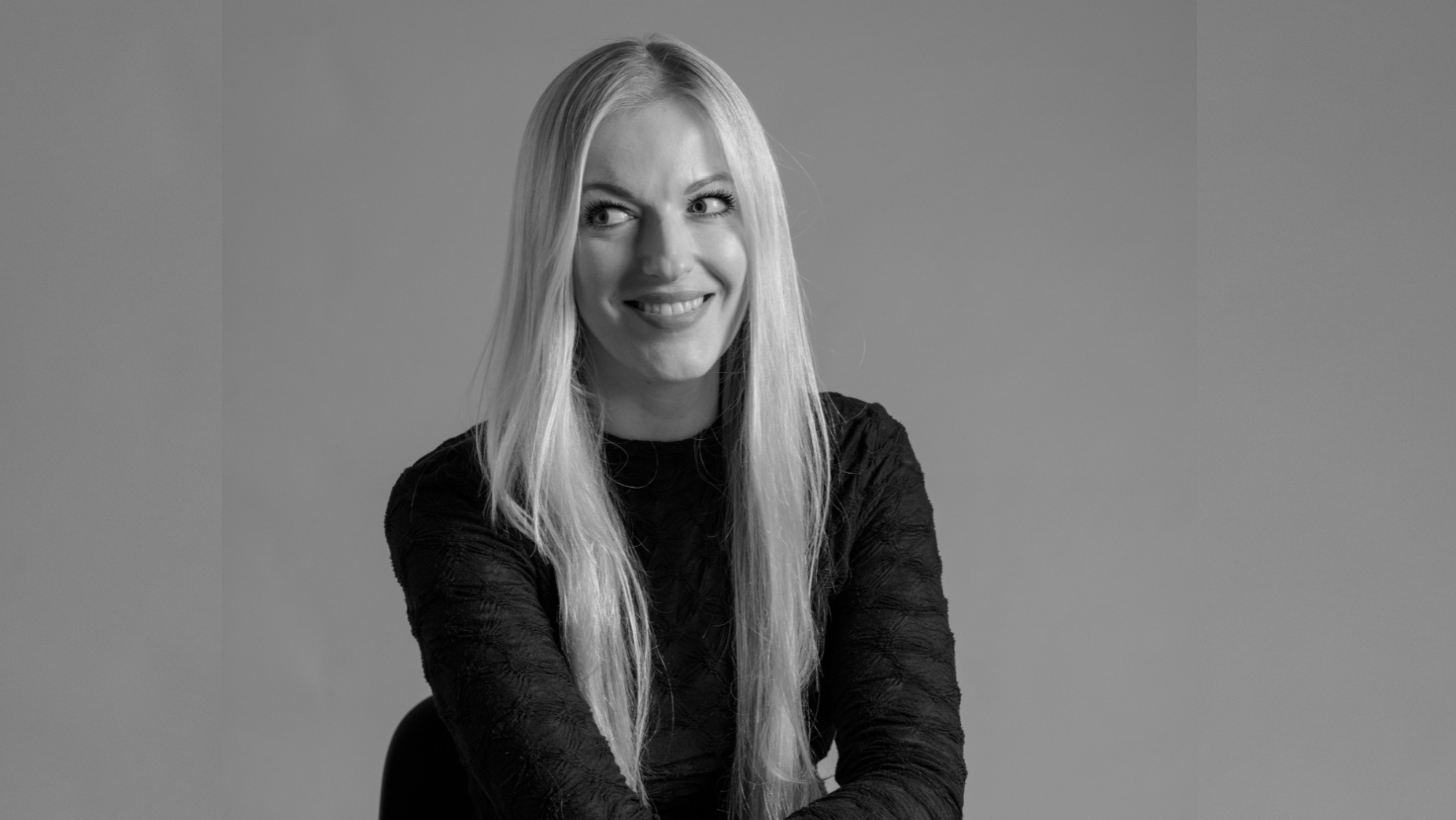
Alison Coggan is group design director at Purple Creative, an acclaimed creative agency in London specialising in ideas-based branding and communications. With over 10 years of experience, she helps craft everything from fascinating brand worlds and global campaigns to meaningful packaging and engaging brand experiences. She is also founder of talkingthings.store, a curated, independent online home and lifestyle boutique.
LBB> Tell us about your current role and design specialism(s)?
Ali> I’m currently a group design director at Purple Creative based in Farringdon, London. I oversee several brands to deliver strategically driven design solutions, activated across various touchpoints from brand to comms. Each project presents its own set of challenges and needs, so it’s always exciting – I could be doing anything from a complete 360˚ identity rebrand, to packaging design, a photoshoot, a video or animation. Just as long as there’s an idea at the heart of it all, the execution follows.
LBB> What drew you to design in the first place and how has your design career evolved?
Ali> It’s always been about solving problems for me. Since I can remember, I have been creative, so design was a natural path to take, and I quickly grew to love the parameters of a design brief and delivering against measurable objectives for brands. From the beginning I was drawn to strategically driven design, using insights into consumer behaviour to springboard the creative and hang an idea on. Working out how I can connect with and engage an audience to create a memorable brand experience. Ideas, ideas, ideas.
Over the past 12 years or so I’ve moved between brand, retail, environmental, F&B and experiential design, so I’ve tried a lot of things. Working across different specialisms early on gave me a great foundation for my career and I draw on that experience all the time. It also allowed me to work out what I enjoyed the most.
At Purple, I work with a lot of alcohol brands, which I really enjoy for their diversity of brief. They speak to different audiences and show up in a multitude of touchpoints which gives huge stretch and opportunity for the creative solution.
LBB> What aspects of design do you get really nerdy about personally?
Ali> I’m not sure if this qualifies as nerdy or just excitement but for me, I love the concept stage. That early phase of ideas generation - casting the creative net wide to see what lands. It is a super exciting process, letting go of the limitations of the brief for a moment and immersing fully in a subject or theme – stretching where an idea can take me, looking in unexpected places before reigning it back in to then land on a simple, effective creative nugget that hits the brief.
I believe you must ‘go there’ before you can come back and decide on where the sweet spot lies - it’s often by pushing ideas beyond what’s comfortable that we land where we need to be.
I also have a love for art direction, something that has always come quite naturally to me – everything from pre-prod to being on-set - I love that you can evoke a whole mood or create a whole world through a curated image. You can transport people to a completely different place and time, sometimes without even leaving a studio.
LBB> There are so many new design tools out - what tools do you like to use and why? (whether digital platforms or old fashioned pen and paper!)
Ali> I have my own little black book of ‘digital bookmarks’ I’ve been taking with me over the years. It has everything I’ve stumbled across or found inspiring or thought “that’ll be useful one day”, from blogs to photographers to activations and type foundries. That’s a go-to source of inspiration for me.
I do like the old-fashioned pen to paper – at concept stage I’ll sketch out ideas to quickly see if they work.
I also like to get out and about - do some ‘in person’ competitor research, go and see the competitor/consumer landscape in action away from a screen, seeing it in the flesh gives another layer of understanding to how designs are perceived. I do think it’s important to step away from your screen for a minute. Also looking beyond the category you are working on to other sectors is a good source of inspiration.
LBB> What are the most persistent misconceptions about your particular design specialism that you see across the advertising and marketing landscape?
Ali> That big brands can’t be agile. Brands we work with are constantly innovating, evolving and adapting to suit consumer needs. We have seen the rise of no and low alcohol in the drinks industry with some exciting innovations carving out a whole new category.
Equally, inspiring collaborations and innovative experimentation pushing the boundaries of the liquid. Big shifts towards becoming more sustainable often mean pivoting in new directions. Take Grolsch for example – our recent rebrand was driven by sustainability reasons which meant they retired the iconic swing top. Drinks brands are constantly evolving and innovating and that brings real energy to the sector.
LBB> How do you think about the ethics of design?
Ali> Design will always toe the line between informative and persuasive, but I believe in the right hands it has the power to do good. We see activations unite communities, inform and educate people on important topics, inspire a sense of pride, and rally positive change. That’s huge.
Particularly working on alcohol brands there is some controversy around it. I think there is baggage with the subject of ‘advertising’ in general. But at the risk of using buzz words – brands are shifting to become more authentic and real - connecting with consumers rather than pulling the wool over their eyes.
I do believe it’s next gen consumers driving that though, they demand it. We are no longer satisfied with over stylised, glossy imagery – we seek real life, raw, unfiltered, honest expression. And it is the designers/creatives responsibility to give brands an honest voice.
LBB> What are some of your favourite examples of creative design solutions that inspire you?
Ali> I had this question in my first ever interview when I was a grad and the example I gave still stands the test of time – which goes to show that brilliant design can be timeless. It was a Hermes window display with a silk scarf suspended in the centre. A digital screen hung parallel and showed a woman gently blowing and as the video played, the scarf physically blew in the wind showing the beauty of the fabric as it moved.
The interplay between physical and digital conveyed the product’s attributes so simply and clearly, there was no need for messaging or words.
LBB> Which design projects throughout your career have been the most satisfying to work on and why?
Ali> I recently led the Grolsch rebrand at Purple Creative. The brief was to refresh both the entire global VI and packaging suite - it was exciting to work on a project of that breadth and scale. With the swing-top retired for sustainability reasons, we needed to define a new distinctive brand asset to drive the visual identity and packaging.
We dug into the archives to discover that the Grolsch wordmark dates back to 1615. We turned it back to green, redrew it to premiumise it and make it feel more grown up and then used it in a really dynamic way. Off pack we use it at scale, in different colourways and embedded within photography, creating energy and dynamism. On pack it is locked-up with premium heritage cues.
The packaging was a whole project within itself, creating a strong, masterbrand led design system for their extensive portfolio and secondary packs that stood up in research for shelf stand out against the big guys like Heineken and Stella.
Our brand guidelines and toolkits capture the 360˚ identity refresh in a way that’s easy for markets to activate across multiple channels. It was the perfect meeting of a great brief, a trusting client and a switched-on team and I’m proud of the work we achieved.
A second project that stays with me, is a charity project for the Royal Brompton Hospital. We were approached to create a series of artworks to brighten up the children’s ward, but it was so much more than that.
Many of the patients were staying there for lengthy periods of time so it was essential that the children and families had a more joyful environment that provided them with some escapism.
Another aspect of the brief was to improve way finding – decluttering messaging and making it easier and stress free for both staff and patients to navigate the ward.
An important part of our response to the brief was putting the children and families at the heart of the creative development. We held workshops and the children’s illustrations were incorporated into the final designs.
Each room was a mythical landscape cantered around one of five themes, ocean, forest, desert, mountain and riverside – with the choice of design carefully chosen to suit the space, either dialling up distracting elements or using calmer, textural backgrounds for sensitive areas.
Colour theory was adopted to suit the spaces and site lines were considered, strategically placing designs on ceiling tiles. We flooded the walls from floor to ceiling with printed vinyls, some as big as six metres wide.
It was a rewarding project to be involved in and hopefully still brings joy into the space.
LBB> What’s going on at the moment in design that’s getting you particularly excited?
Ali> I feel like AI is the go-to here, but I currently only use it as a way to speed up processes freeing up more time for creativity rather than as a creative tool itself. I’m sure that will change!
More so for me, it’s the next generation of designers – across the field so not just in brand but all creative mediums from fashion to furniture to product design and architecture.
The buzz and energy always brings new perspectives and inspires new solutions.
LBB> Thinking of people at the beginning of their career, what advice would you give them for navigating this constantly changing field?
Ali> Don’t be afraid to try, fail, pivot, explore, ask questions.
When I started out, I locked in a foundation of design skills and some solid agency experience, and then I took that with me to different agencies, different clients, different specialisms and tried stuff!
Put yourself out there, Say yes to opportunities. If the opportunities aren’t there, create them yourself.
The first path might not be the best one, don’t be afraid to get things wrong or pivot, the beginning of your career is the easiest time to do this, and you will get so much out of experiencing different avenues of design even if you decide they aren’t for you. I lean on my experience from working across different specialisms all the time and it’s given me a rich bank of knowledge and inspiration to pull from.
Finally, keep your eyes open, there’s so much out there in terms of inspiration and these days it’s constantly evolving and can become overwhelming, but look in unobvious places, turn it upside down, read it backwards, do whatever you need to do to find an angle.









